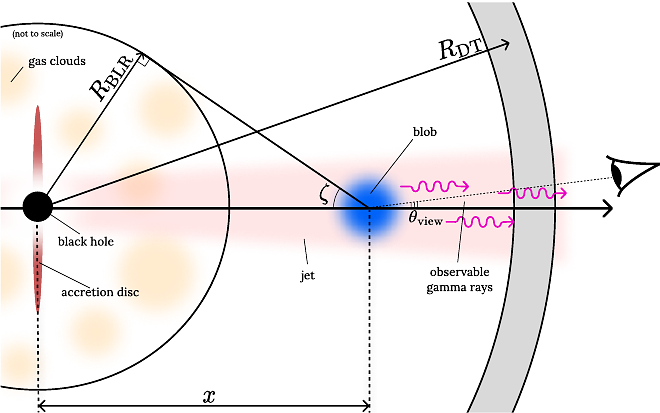Insights from leptohadronic modelling of the brightest blazar flare

Insights from leptohadronic modelling of the brightest blazar flare
Egor Podlesnyi, Foteini Oikonomou
AbstractThe blazar 3C 454.3 experienced a major flare in November 2010 making it the brightest $\gamma$-ray source in the sky of the Fermi-LAT. We obtain seven daily consecutive spectral-energy distributions (SEDs) of the flare in the infra-red, optical, ultra-violet, X-ray and $\gamma$-ray bands with publicly available data. We simulate the physical conditions in the blazar and show that the observed SEDs are well reproduced in the framework of a "standing feature" where the position of the emitting region is almost stationary, located beyond the outer radius of the broad-line region and into which fresh blobs of relativistically moving magnetized plasma are continuously injected. Meanwhile, a model with a single "moving blob" does not describe the data well. We obtain a robust upper limit to the amount of high-energy protons in the jet of 3C 454.3 from the electromagnetic SED. We construct a neutrino light curve of 3C 454.3 and estimate the expected neutrino yield at energies $\geq 100$ TeV for 3C 454.3 to be up to $6 \times 10^{-3}$ $\nu_{\mu}$ per year. Finally, we extrapolate our model findings to the light curves of all Fermi-LAT flat-spectrum radio quasars. We find that next-generation neutrino telescopes are expected to detect approximately one multimessenger ($\gamma + \nu_{\mu}$) flare per year from bright blazars with neutrino peak energy in the hundreds TeV -- hundreds PeV energy range and show that the electromagnetic flare peak can precede the neutrino arrival by months to years.